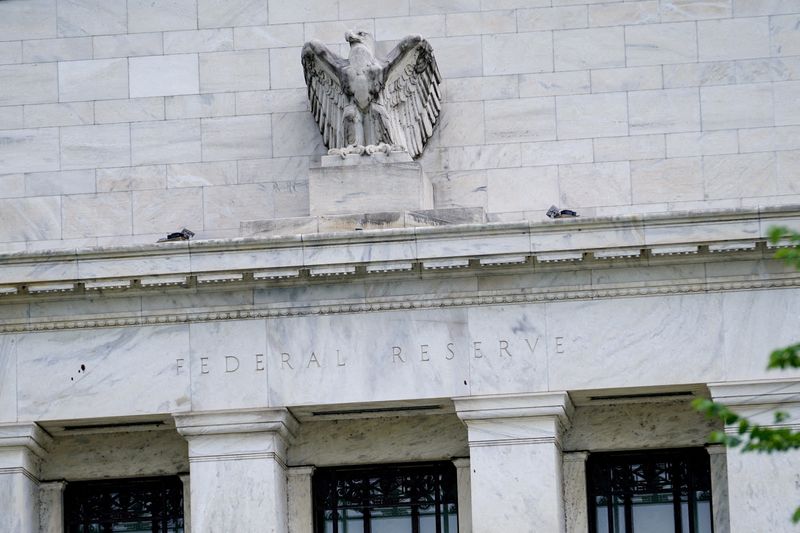By Howard Schneider
(Reuters) – Minutes of the U.S. Federal Reserve’s half-a-percentage-point rate cut last month, to be released on Wednesday, may provide a final word on just how divided policymakers were over a decision that took many economists by surprise and sparked the first dissent from a member of the Board of Governors in 19 years.
Fed chair Jerome Powell in his post-meeting press conference said there was “broad support” for the half-point cut, with even dissenting Governor Michelle Bowman agreeing it was time to ease monetary policy but preferring to start with a smaller quarter-point reduction as a hedge against inflation risks she is not convinced have been fully tamed.
Yet Powell also acknowledged a “good diversity of excellent discussion” about the decision, while projections issued by Fed policymakers about what would happen over just the next three months were unusually dispersed.
In anonymized rate cut projections issued at the September meeting policymakers saw rates falling anywhere from 0 to 0.75 basis points further by the end of the year. This is a spread matched in the Fed’s September 2022 projections, when officials were still in the midst of hiking rates and debating how much farther they would need to go to tame inflation, but before that not seen since September 2016.
The three-month time horizon provided in the Fed’s September outlook to the end of the current year is the shortest in the central bank’s Quarterly Summary of Economic Projections.
The minutes, to be released at 2 pm EDT (1800 GMT), provide a detailed account of the back and forth among policymakers and staff over the course of each two-day meeting. They contain sections on the economic and financial outlook as well as an account of officials’ views about appropriate monetary policy and the risks they feel the economy is facing.
While it is a backward-looking document, typically issued three weeks after each Fed meeting, it can also better frame for the public and investors the spread of opinion around each policy vote. In doing so it also can provide clues about how the Fed might react to incoming economic data.
The minutes “may shed some light on the bar for officials to move policy rates lower at a faster rate,” economists from Citi wrote on Monday.
Investors currently expect the Fed to lower the benchmark rate another quarter of a point at the Nov. 6-7 meeting and then again in December.
The document may also give a better sense of whether the half-point cut was a hard sell for its proponents or not. Though there was only one dissent, that does not speak to how the 7 non-voting participants in the meeting, the presidents of some of the regional reserve banks who rotate in and out of voting positions year by year, felt about the move, or about how the voters viewed their options.
In an interview last week, Richmond Fed president Thomas Barkin, who does have a vote this year and supported the half-point, said he was open to a smaller reduction as well and did not see much macroeconomic difference between the two. He noted that starting with the larger reduction was consistent with the policy paths outlined by almost all 19 Fed officials.
Nine officials, for example, expected four quarter point cuts for all of 2024 would be appropriate, while seven others projected three only.
“It was a big tent,” Barkin said. “If you were going to end up somewhere in that range…it was reasonable to do 50. It also would have been reasonable to do 25. I was perfectly comfortable voting for 50.”
From here, Powell and other officials have noted, the Fed can tailor the pace and extent of cuts depending on how the economy and inflation evolve.
A Friday jobs report cemented views among investors that the Fed would scale back to a quarter point cut at its November 6-7 meeting after payroll employment surged more than expected, the unemployment rate fell, and wage growth at 4% remained above what policymakers see as consistent with their 2% inflation target.
New inflation data to be released on Thursday will be the latest key data point in the debate, with policymakers generally open to continued rate cuts as long as there is evidence price pressures are continuing to ease.

